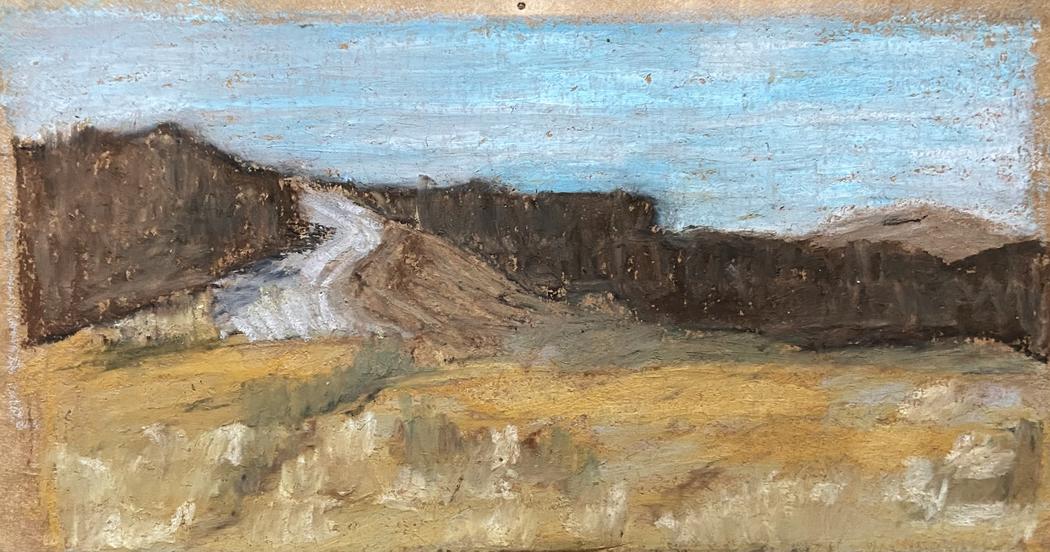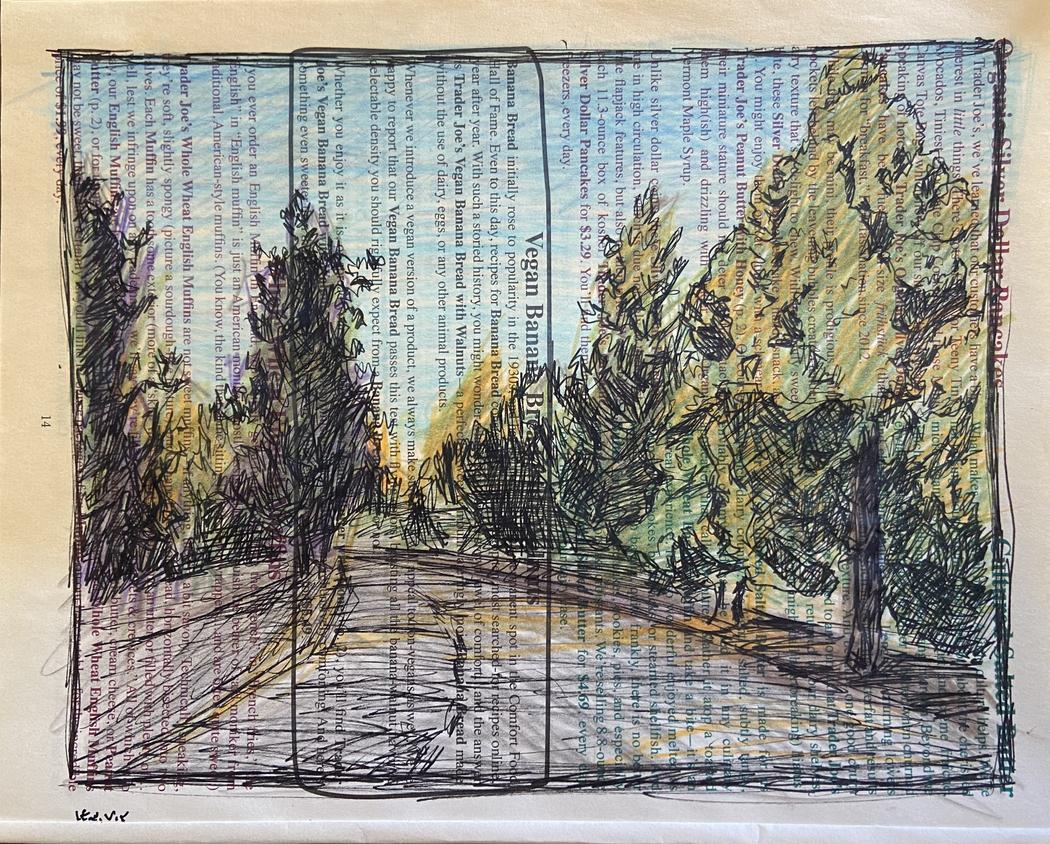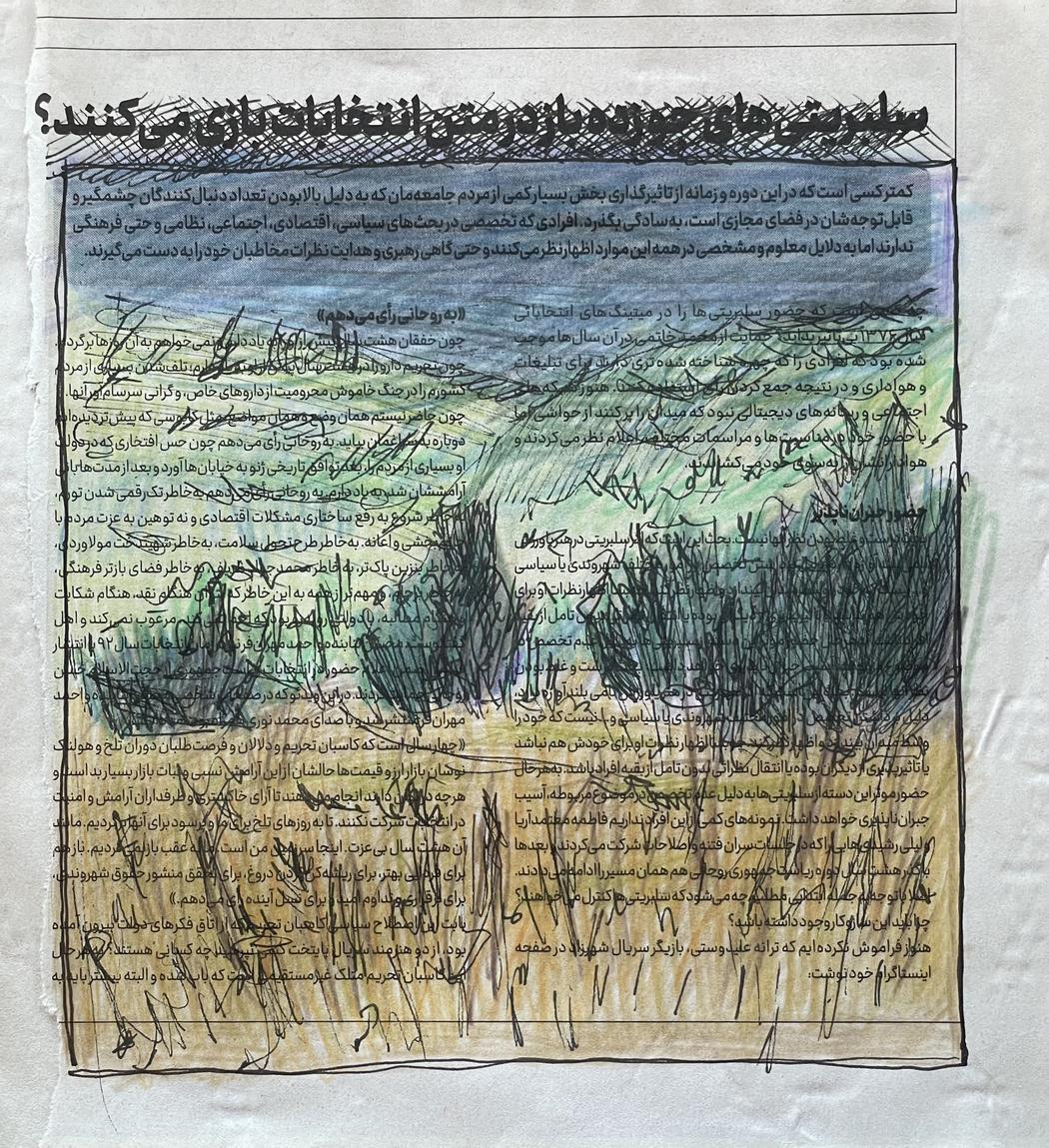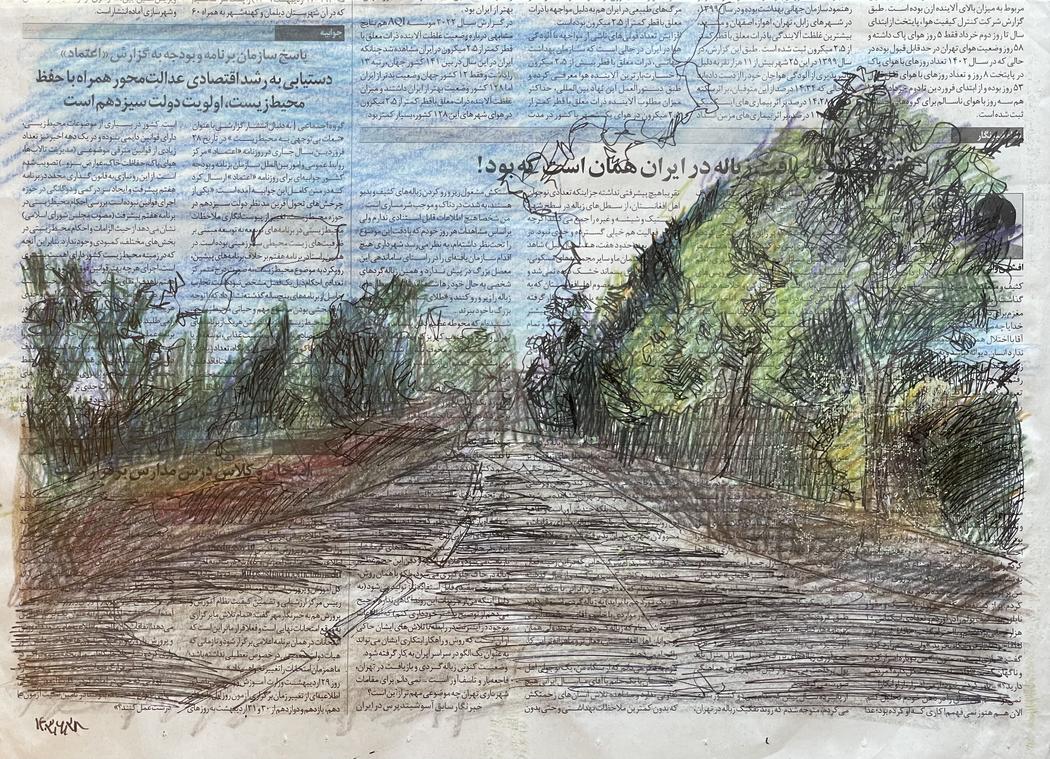Ghazal Ghasempour
Year of birth: 2003
Where do you live: San Diego, California, USA
Your education: Bachelor of Fine Arts (BFA) in Painting, Iran University of Art, Tehran, Iran
Describe your art in three words: Reinterpretation, observation, presence
Your discipline: visual arts with focus on painting and drawing
Instagram
Could you tell us more about your move from Iran to San Diego? How has this transition influenced your artistic vision?
I moved to San Diego with my family about two years ago, after years of going back and forth between Iran and the U.S. Even though I’ve traveled back to Iran a few times, San Diego is now where I live and work.
The calm atmosphere here really helped me focus more on my art. In Tehran, the constant traffic and noise made it hard to slow down or think clearly.
Also, being surrounded by nature in San Diego changed how I see things. In Tehran, there weren’t many natural views, but here I often see mountains, trees, and even the ocean—sometimes just while driving. Those drives, especially the long quiet ones to work, gave me time to observe the landscape in a slow, thoughtful way. That experience shaped my latest series, Daily Drive Diary, which is based on the views I saw on those everyday routes.
What drew you to the idea of turning everyday views—like highways and cityscapes—into a visual diary?
The idea came from my daily drives after moving to San Diego. I was often on the same routes and the repetition gave me space to notice small shifts in light, color, and atmosphere. These everyday views started to feel personal, like chapters in a story.
It also became a way to record memories. Seeing the same landscape every day gave me a sense of familiarity that was comforting, especially during the early days after migration. Turning those views into a visual diary helped me connect with my new surroundings and find beauty in the routine.

How do you choose which scenes or moments to capture in your work?
I take a lot of photos of these scenes, and when it comes time to paint, I look through them and choose the one that feels best to me in that moment. Sometimes it’s about the composition or colors; other times, it’s the memory or feeling behind the image that makes it the right choice.
I don’t paint exactly what I see in the photos, they serve more as reminders and inspiration. I often change and reinterpret the scenes to fit the mood and emotion I want to express.
For me, painting isn’t just about the place itself but about capturing the mood and emotional connection I have with that moment in time.
You mention the impact of news and media on our focus—how do you represent that in your pieces?
In my other collection (News and Views) , I use Persian and English newspapers as canvases to explore how constant media presence affects our daily lives. The newspaper backgrounds symbolize the flood of information we face every day, often without even noticing.
I layer colors over the news text to show how difficult it is to focus on one thing when so much competes for our attention. This layering reflects the challenge of maintaining concentration amid distractions.
Like my Daily Drive Diary series, this work transforms everyday materials into art, inviting viewers to reflect on how we consume information and find meaning in it.

How does your Iranian cultural identity inform your current projects?
My Iranian background is an important part of my perspective and creative process. Even though I live in San Diego now, my experiences growing up in Iran continue to influence how I see the world and what I choose to express in my work.
The landscapes that catch my attention and inspire me might feel ordinary or unnoticed to someone who grew up here. For me, coming from Iran, these views stand out and become meaningful subjects.
For example, in my “News and Views” series, using Persian-language newspapers connects directly to my roots and personal history. The influence of news on the lives of Iranians is very strong, and as an Iranian, there is a constant pressure to stay informed. This awareness and responsibility have also shaped my work. It reflects the blend of cultures I live between, showing how information and identity cross borders.
Overall, my cultural identity helps me explore themes of memory, place, and belonging, whether through landscapes I paint or materials I use. It adds depth and complexity to how I approach both the content and the meaning behind my art.
What role does nostalgia play in your creative process?
Nostalgia has influenced my interest in repetitive landscapes, the familiar views I see every day. These repeated scenes carry memories and emotions that make them feel special and meaningful to me.
Moving between Iran and the U.S. has made me aware of how memories shape my experience of place. My work reflects this connection, using nostalgia not as longing but as a way to deepen my understanding of the present moment.

Your works have a quiet, reflective quality—how do you achieve that in terms of composition and color?
I like to keep my work simple and avoid unnecessary details. When I spend too much time on a piece, I get caught up in technical things and lose the feeling I want to express.
I look at many artists who can communicate strong meaning through simplicity, that is what inspires me. My goal is to create a quiet, reflective mood by focusing on essential shapes and colors that carry emotion without distraction.


Leave a Reply